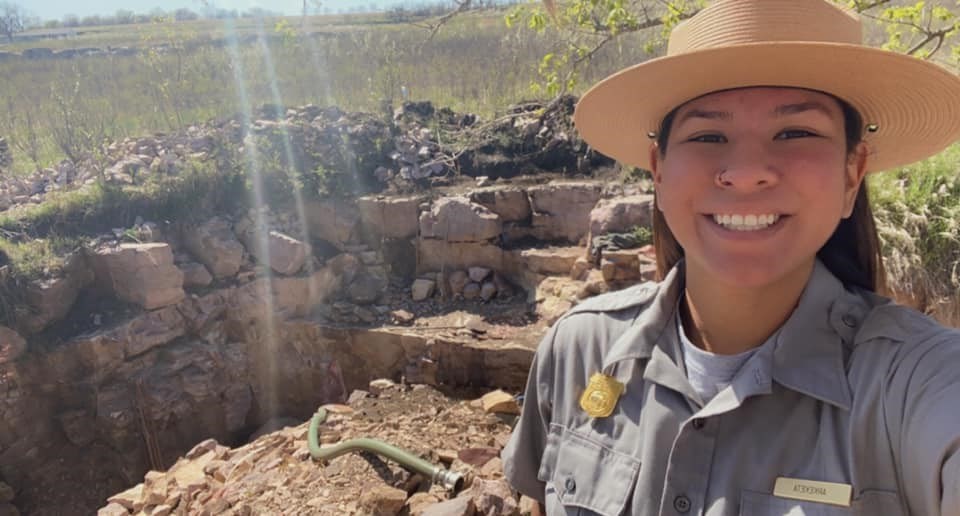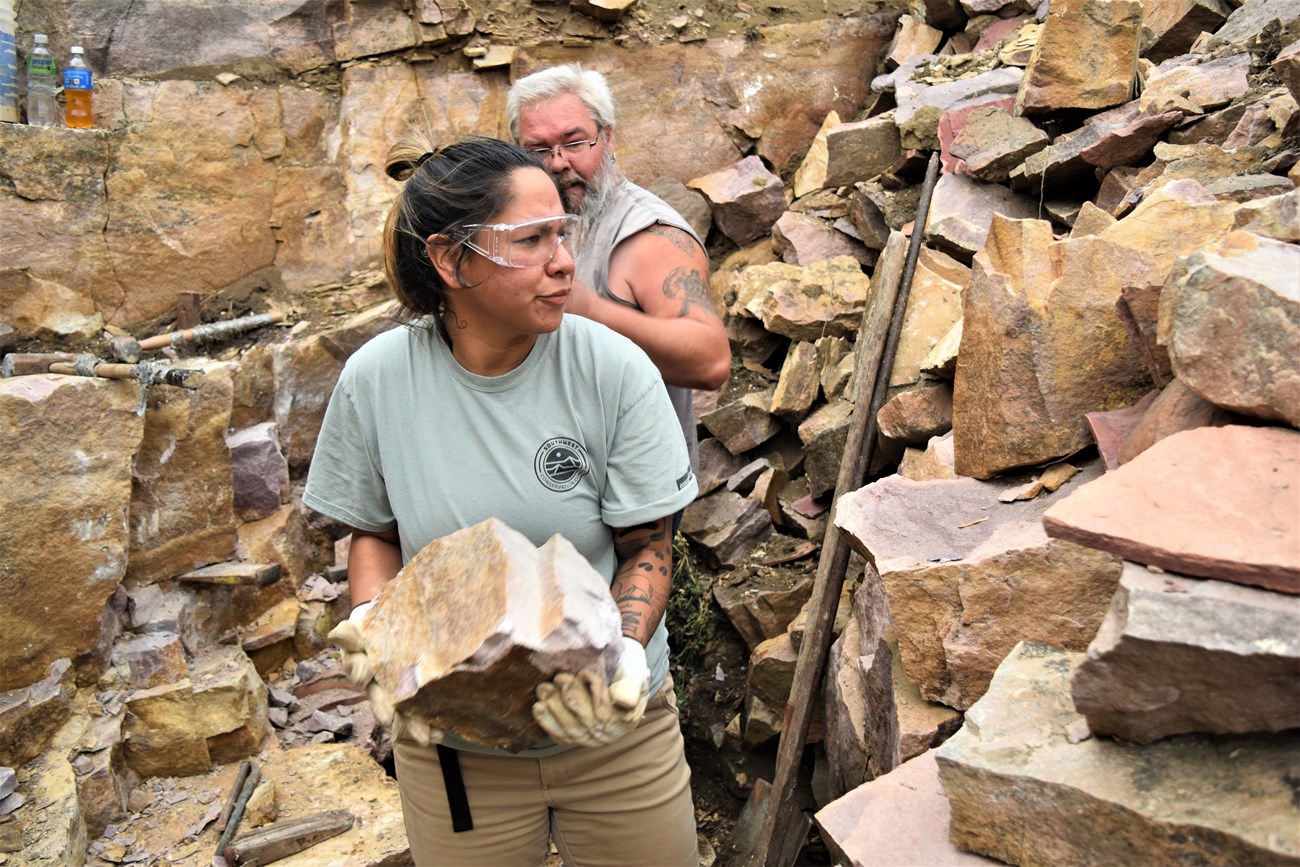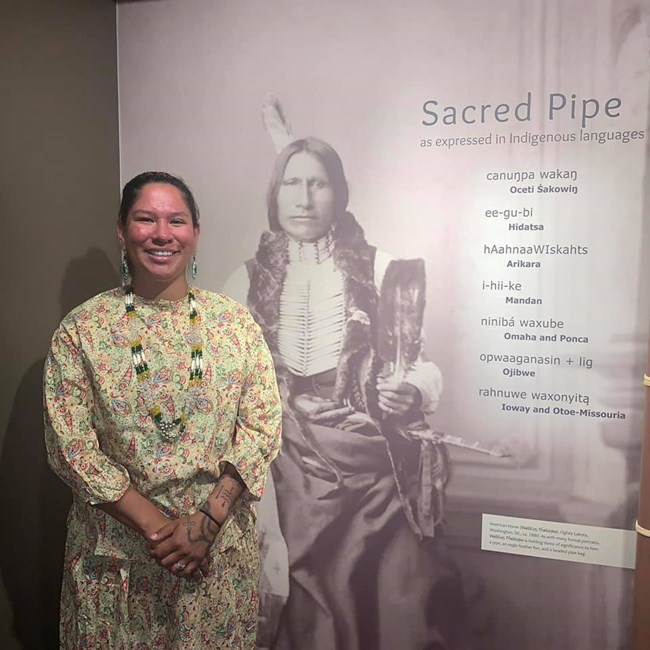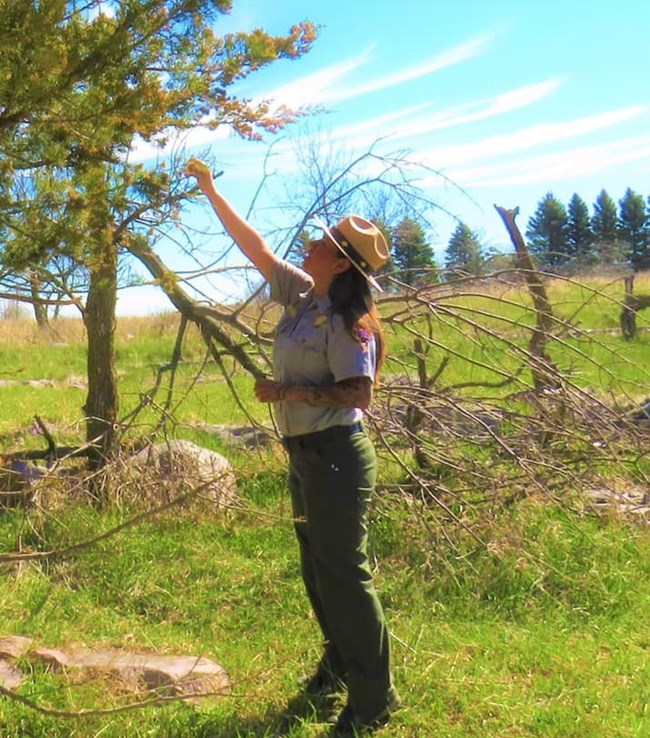Last updated: November 29, 2021
Article
Jessica Arkeketa’s National Park Service Journey: From a Service Corps Member to a Pathways Student and Beyond

NPS Photo
Jessica’s time with ALCC changed her life. She shares, “I was a little lost before the program and I needed some direction. I was excited for a new beginning but not prepared for what was about to come. Reconnecting with ancestral lands gave me purpose and meaning again.” She found out about Conservation Legacy through her tribe’s Tribal Historic Preservation Office. These offices have many responsibilities and typically advise Federal agencies on the management of Tribal historic properties, supervise when there are archeological digs or prescribed burns on tribal lands, and conduct surveys and inventories of tribal historic properties.
Once she was accepted into the Stewards Individual Placement Program through Conservation Legacy, she worked six months at Pipestone National Monument. One of the great impacts she noticed from being part of ALCC as a corps member was the personal growth she experienced. She recalls, “I had never done any work like this before. I was able to research, develop, and present interpretive talks and tours focused on the history and culture of Pipestone. I created educational programs for students and developed quarry demonstrations. It was a life changing experience that gave me a second chance. I was able to find deeper meaning within myself and understanding while working where my ancestors once were.”

NPS Photo
Jessica’s reasons for wanting to continue to work at Pipestone National Monument were numerous. “It is my ancestral homelands. We were once here and quarried for the stone. I enjoy the community and wanted to continue my outreach with working with local tribal youth.” Her time as a service corps member allowed her to shape her role using the skills she already possessed and gain new ones simultaneously. Community, collaboration, and communication were important in her daily interactions and in strategically thinking about how to improve interpretive programs. Through her curiosity, energy, and willingness to dive into any new kind of activity, she maximized her experience, as well as the visitor’s experience, and the Interpretive operation.
To expand on the importance of community, Natalie Barber, a Park Ranger at Pipestone National Monument, who had worked closely with Jessica from day-to-day, emphasized, “Jessica brought an incredibly friendly and welcoming energy to the park. I could tell where she was in the visitor center by following the sound of visitors laughing or engaged in animated conversations. She engages so naturally and amicably with people (staff included) that she made everyone feel at home regardless of who they were or where they came from. You can't walk away from a conversation with her without a smile on your face - that's just how it is...”
Because of Jessica’s experience working with young people, the park included her in the programming of the National Park Foundation Transportation Grant. The park was using this grant to help bring more Indigenous youth to the park and set up programs that would help foster connections to their ancestral land. Jessica worked directly with the youth and developed trip ideas for them. This meant getting in the quarry pits with the kids to show them how to quarry and setting up carving classes, so they could learn to carve pipestone. She took what she had learned and translated it into an interpretive program for Indigenous youth that could be used for future visitors to the park. She also found great joy in helping the elders quarry and learn from them on how to carve pipestone. This proved to be enormously helpful, given that many people had not carved pipestone before arriving at the site. For many, this experience of carving pipestone and learning more about the history of the park has made them want to come back to Pipestone National Monument.

NPS Photo

NPS Photo
As Jessica came to realize, learning at a park can come from anywhere, whether it is from an NPS staff (like a park ranger), a visitor, a volunteer, or a student. Through Jessica’s initial interest in providing stewardship to her public lands, she found wonderful people to work with, community, friendships, and a connection to her ancestral lands that she truly had the chance to tap into while working at Pipestone National Monument. Jessica is part of a diverse team that includes other Indigenous employees, who are protecting and interpreting their ancestral lands. Pipestone National Monument’s Superintendent Lauren Blacik said, “I am honored to work alongside Jessica and this talented cohort. The passion, creativity, and knowledge they bring to Pipestone National Monument has strengthened resource preservation and interpretation immensely. Jessica’s future is bright, and she makes me feel hopeful about the future of the NPS.” Our public lands belong to us all, so let us share this space together.
Want to learn more about how you can get involved with our national parks through NPS Youth and Young Adult Programs? Please e-mail us and follow us on Facebook, Instagram, and Twitter @NPSYouth and use #NPSYouth to share your experience with us! Visit our page and find your next opportunity with us.
